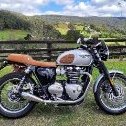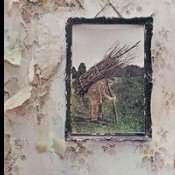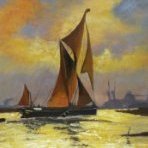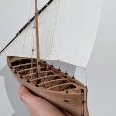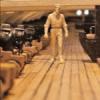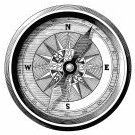Supplies of the Ship Modeler's Handbook are running out. Get your copy NOW before they are gone! Click on photo to order.
×
-
Posts
8,149 -
Joined
-
Last visited
Reputation Activity
-
 allanyed got a reaction from mtaylor in Rigging colors
allanyed got a reaction from mtaylor in Rigging colors
Older topic and from what I could find, a new question.... apologies if this had been asked and answered elsewhere.
When did merchantmen and naval vessels (Spain in particular, European in general) start tarring standing rigging as a common practice?
Thanks
Allan
-
 allanyed reacted to druxey in Question on Ships' Boats Support Frames/Beams
allanyed reacted to druxey in Question on Ships' Boats Support Frames/Beams
Skid beams. There were fore and aft holes through the 'U' portion of the iron supports with a retaining pin on each end of the beam.
-
 allanyed got a reaction from Canute in Iron Braces on Hanging Knee Deck Supports... HMS Victory
allanyed got a reaction from Canute in Iron Braces on Hanging Knee Deck Supports... HMS Victory
Hi Morgan
Could you post this as a new subject in the Ship's Plans and Project research forum as I believe a lot of member would like to follow this and may not see it here in TMJs "iron braces" topic.
Thanks
Allan
-
 allanyed got a reaction from Archi in Gun Carriage questions
allanyed got a reaction from Archi in Gun Carriage questions
Morgan,
Are you referring to the ring identified below with a question mark? Looking at various drawings the training tackle(also called relieving tackle) ran from the breech end of the carriage inboard, not to the hull. It is my understanding that training (aiming) the guns was done be elevating or depressing using the wedge and using leveraging poles and such under the carriages to shift them sideways when needed.
There is some question in my mind about the identification of the rings in the first drawing in post #43. The port tackle was used to raise and lower the gun port lids (line# 4) Then it shows rings in the hull (#7) called port tackle eyebolt which make no sense, at least to me. Lavery gives a verbal description for rigging the ports and the variations over the years on page 139 of The Arming and Fitting of English Ships of War and it does not jive at all with the above drawing. Line #4 in the above drawing should run to a block in the beam above, not down towards the deck. The drawings below are from Falconer's Universal Dictionary of the Marine, 1769 and are show on page 386 in Caruana's English Sea Ordnance. volume 2. It seems there are different terms for the same item being used by whoever did the first drawing shown in post #43, and others such as Falconer. I have no idea if one or the other or all of them were in common use back in the day.
Allan
-
 allanyed got a reaction from Archi in Gun Carriage questions
allanyed got a reaction from Archi in Gun Carriage questions
Hi Steve, thanks for posting these pictures. There are doubts that these are faithfully reproduced. For example, the breech rope does not pass through the loose ring as is seen in various contemporary based sources for rigging guns. If it does not to pass through the ring, what is the ring for? Drawing is showing 1795 carriage pattern (From Congreve)
Allan
-
 allanyed got a reaction from DaveBaxt in Gun Carriage questions
allanyed got a reaction from DaveBaxt in Gun Carriage questions
Some patterns of gun carriages show two eye bolts without rings on each cheek, others only one. What is the purpose of the additional ring? I cannot find any rigged guns where the second ring is used. Note that Caruana shows some cheeks with two fixed rings on some larger 1732 patterns. See below
Allan
-
 allanyed got a reaction from Archi in Gun Carriage questions
allanyed got a reaction from Archi in Gun Carriage questions
Hi Ron,
My fault for not being more clear.
Yes Lieste, that is the distinctive ring to which I was referring, thank you for clarifying. Also, the badge or cypher varied as well as the trunnions and astragal rings. Sketch below with approximate eras may help.
Allan
-
 allanyed reacted to Gregory in HM Cutter Alert by Thukydides - FINISHED - Vanguard Models - 1:64 - first build
allanyed reacted to Gregory in HM Cutter Alert by Thukydides - FINISHED - Vanguard Models - 1:64 - first build
The AOTS Blandford also shows double + single for 6 pounders. I guess Goodwin didn't read Caruana.😁
Lavery in " The Arming and Fitting, etc... " .. without regard to caliber.
Takakjian in AOTS 'Essex' shows double + single for 12 pounder.
Was Caruana's data part of the establishments?
Did armorers always follow this practice?
Double + single has become a modeling convention, particularly with kits, and most builders will never be shown anything to the contrary until after they have done all the work. ( ....hours of fiddly work. )
I agree with Thukydides that the aesthetics come into play with ship models, in many areas that are contrary to contemporary full size practice.
With that said, Thukydides, your Alert sets a high standard in ship modeling.
I apologize if I have cluttered up your log with this distraction.
-
 allanyed reacted to Thukydides in HM Cutter Alert by Thukydides - FINISHED - Vanguard Models - 1:64 - first build
allanyed reacted to Thukydides in HM Cutter Alert by Thukydides - FINISHED - Vanguard Models - 1:64 - first build
I was planning to discuss this in my upcoming post when I start rigging the gun tackle. Basically there was a post I made a long time ago asking about this and the results were inconclusive. Goodwin depicts the double blocks in the aots book on alert, but as you pointed out caruna seems to contradict this. Lavery also mentions the blocks, but only makes vague statements.
On the balance is suspect single blocks were likely used, but as I had already acquired the double blocks, I decided to go with Goodwin.
Also I like the look of the double blocks a bit better and since this build is a bit of a compromise between accuracy and aesthetic (for example the decorations I painted are highly unlikely to have been on the actual ship), I figured it wasn't too big of a sin.
-
 allanyed got a reaction from mtaylor in New modeler saying thanks
allanyed got a reaction from mtaylor in New modeler saying thanks
Warm welcome to the fray Michael. A motley group we may be, but a more helpful crew you will never see.
Allan
-
 allanyed got a reaction from jpalmer1970 in HM Cutter Alert by Thukydides - FINISHED - Vanguard Models - 1:64 - first build
allanyed got a reaction from jpalmer1970 in HM Cutter Alert by Thukydides - FINISHED - Vanguard Models - 1:64 - first build
You could have a lot of company as that is maybe why the master model builders of the 17th and 18th centuries did not always include ordnance of any kind and when they did, rigging the cannon was often left off. 😀
Your photo shows double and single blocks so I was curious if these are all for the cannon? Adrian Caruana points out in his book, The History of English Sea Ordnance Volume II page 386, only 32 pounders and larger had a single and double block set up for both the train and running out tackle. All other calibers had only single blocks. I would not be surprised if there were exceptions, as is often the case for us, for other large calibers such as the 24s to have a single and double.
Allan
-
 allanyed got a reaction from Knocklouder in New modeler saying thanks
allanyed got a reaction from Knocklouder in New modeler saying thanks
Warm welcome to the fray Michael. A motley group we may be, but a more helpful crew you will never see.
Allan
-
 allanyed got a reaction from JeffT in New modeler saying thanks
allanyed got a reaction from JeffT in New modeler saying thanks
Warm welcome to the fray Michael. A motley group we may be, but a more helpful crew you will never see.
Allan
-
 allanyed got a reaction from Thukydides in HM Cutter Alert by Thukydides - FINISHED - Vanguard Models - 1:64 - first build
allanyed got a reaction from Thukydides in HM Cutter Alert by Thukydides - FINISHED - Vanguard Models - 1:64 - first build
You could have a lot of company as that is maybe why the master model builders of the 17th and 18th centuries did not always include ordnance of any kind and when they did, rigging the cannon was often left off. 😀
Your photo shows double and single blocks so I was curious if these are all for the cannon? Adrian Caruana points out in his book, The History of English Sea Ordnance Volume II page 386, only 32 pounders and larger had a single and double block set up for both the train and running out tackle. All other calibers had only single blocks. I would not be surprised if there were exceptions, as is often the case for us, for other large calibers such as the 24s to have a single and double.
Allan
-
 allanyed got a reaction from AJohnson in HM Cutter Alert by Thukydides - FINISHED - Vanguard Models - 1:64 - first build
allanyed got a reaction from AJohnson in HM Cutter Alert by Thukydides - FINISHED - Vanguard Models - 1:64 - first build
You could have a lot of company as that is maybe why the master model builders of the 17th and 18th centuries did not always include ordnance of any kind and when they did, rigging the cannon was often left off. 😀
Your photo shows double and single blocks so I was curious if these are all for the cannon? Adrian Caruana points out in his book, The History of English Sea Ordnance Volume II page 386, only 32 pounders and larger had a single and double block set up for both the train and running out tackle. All other calibers had only single blocks. I would not be surprised if there were exceptions, as is often the case for us, for other large calibers such as the 24s to have a single and double.
Allan
-
 allanyed got a reaction from botra288 in Armstrong Frederick Cannon by allanyed - 1:24 scale
allanyed got a reaction from botra288 in Armstrong Frederick Cannon by allanyed - 1:24 scale
Thanks to fellow member Ron Thibault's work in preparing 3D drawings of the Armstrong Frederick pattern, a realistic barrel was easy to have made. Details of the George III cypher and the flash pan as well as astragal rings can be seen below.
Allan
-
 allanyed got a reaction from KLarsen in Armstrong Frederick Cannon by allanyed - 1:24 scale
allanyed got a reaction from KLarsen in Armstrong Frederick Cannon by allanyed - 1:24 scale
Thanks to fellow member Ron Thibault's work in preparing 3D drawings of the Armstrong Frederick pattern, a realistic barrel was easy to have made. Details of the George III cypher and the flash pan as well as astragal rings can be seen below.
Allan
-
 allanyed got a reaction from dafi in Iron Braces on Hanging Knee Deck Supports... HMS Victory
allanyed got a reaction from dafi in Iron Braces on Hanging Knee Deck Supports... HMS Victory
Hi Morgan
Could you post this as a new subject in the Ship's Plans and Project research forum as I believe a lot of member would like to follow this and may not see it here in TMJs "iron braces" topic.
Thanks
Allan
-
 allanyed got a reaction from Quimp Slattery in HM Cutter Alert by Thukydides - FINISHED - Vanguard Models - 1:64 - first build
allanyed got a reaction from Quimp Slattery in HM Cutter Alert by Thukydides - FINISHED - Vanguard Models - 1:64 - first build
You could have a lot of company as that is maybe why the master model builders of the 17th and 18th centuries did not always include ordnance of any kind and when they did, rigging the cannon was often left off. 😀
Your photo shows double and single blocks so I was curious if these are all for the cannon? Adrian Caruana points out in his book, The History of English Sea Ordnance Volume II page 386, only 32 pounders and larger had a single and double block set up for both the train and running out tackle. All other calibers had only single blocks. I would not be surprised if there were exceptions, as is often the case for us, for other large calibers such as the 24s to have a single and double.
Allan
-
 allanyed got a reaction from Glen McGuire in HM Cutter Alert by Thukydides - FINISHED - Vanguard Models - 1:64 - first build
allanyed got a reaction from Glen McGuire in HM Cutter Alert by Thukydides - FINISHED - Vanguard Models - 1:64 - first build
You could have a lot of company as that is maybe why the master model builders of the 17th and 18th centuries did not always include ordnance of any kind and when they did, rigging the cannon was often left off. 😀
Your photo shows double and single blocks so I was curious if these are all for the cannon? Adrian Caruana points out in his book, The History of English Sea Ordnance Volume II page 386, only 32 pounders and larger had a single and double block set up for both the train and running out tackle. All other calibers had only single blocks. I would not be surprised if there were exceptions, as is often the case for us, for other large calibers such as the 24s to have a single and double.
Allan
-
 allanyed got a reaction from DaveBaxt in Rigging colors
allanyed got a reaction from DaveBaxt in Rigging colors
Bill
If it is not a big problem I would forget the black. The standing rigging was darker due to being "tarred" but this gave it a dark brown color, not black as it was not a tar like we see today on our streets, but rather pine tar. Your Coke brown looks pretty good. For the running rigging something close to a color like Pantone 14-0721 TCX would be a good choice, but most any tan should be OK for the running rigging.
-
 allanyed got a reaction from Quimp Slattery in HM Brig Supply by Jobbie - Caldercraft - Scale 1:64
allanyed got a reaction from Quimp Slattery in HM Brig Supply by Jobbie - Caldercraft - Scale 1:64
Jobbie,
Glad to see back, very nice work!
Just as an FYI for the future, during the ten years RN ships had their names on the stern, 1780-1790, they were painted on, they never had carved letters. No names in any form were allowed before 1780 or after 1790. Also, guns smaller than 32 pounders used 2 single blocks for the running out tackle, not a single and double. Not a huge issue for the casual observer, but some builders find these kinds of details interesting.
Allan
-
 allanyed got a reaction from Bob Cleek in Armstrong Frederick Cannon by allanyed - 1:24 scale
allanyed got a reaction from Bob Cleek in Armstrong Frederick Cannon by allanyed - 1:24 scale
Thanks to fellow member Ron Thibault's work in preparing 3D drawings of the Armstrong Frederick pattern, a realistic barrel was easy to have made. Details of the George III cypher and the flash pan as well as astragal rings can be seen below.
Allan
-
 allanyed got a reaction from Lieste in Armstrong Frederick Cannon by allanyed - 1:24 scale
allanyed got a reaction from Lieste in Armstrong Frederick Cannon by allanyed - 1:24 scale
Thanks to fellow member Ron Thibault's work in preparing 3D drawings of the Armstrong Frederick pattern, a realistic barrel was easy to have made. Details of the George III cypher and the flash pan as well as astragal rings can be seen below.
Allan
-
 allanyed got a reaction from GrandpaPhil in Armstrong Frederick Cannon by allanyed - 1:24 scale
allanyed got a reaction from GrandpaPhil in Armstrong Frederick Cannon by allanyed - 1:24 scale
Rings and loops are in place.
Allan





